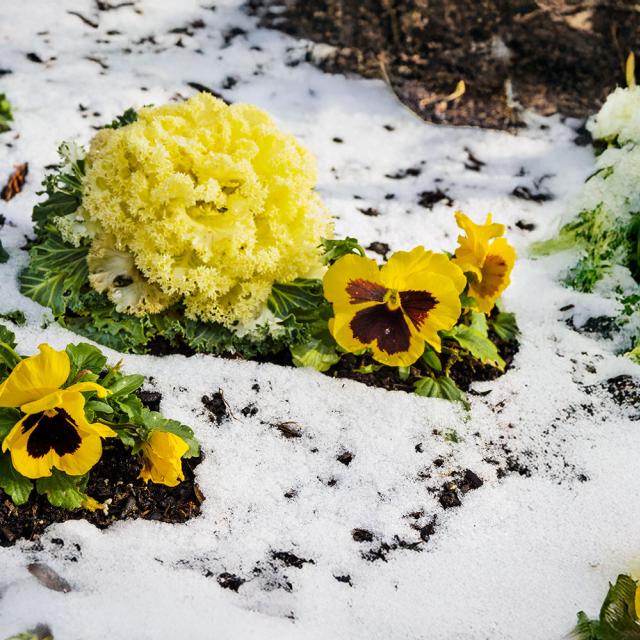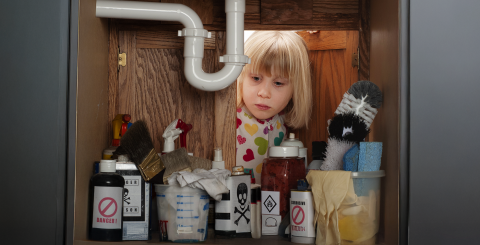Outdoor maintenance: 10 tips for taking care of your outdoor space

Maintaining your yard is about more than just good looks. It is also a way to protect your home and keep your outdoor environment healthy.
Staying on top of key outdoor maintenance year round not only keeps your place looking its best but also helps prevent deterioration and lowers the risk of property damage.
Ready to roll up your sleeves?
Follow these 10 tips for a yard that will be the envy of the neighbourhood and a safe place for your family to enjoy.
- First, a big spring cleanup
It’s no secret that Québec winters are harsh and can seriously damage your yard. A big spring cleanup will help repair the damage and get your yard ready for summer. Start by collecting the leaves and stones, then dethatch the lawn by giving it a good raking. Spring is also the perfect time to use an aerator to improve the soil before feeding your lawn with fertilizer or compost to stimulate growth.
Tip: For a healthy lawn all summer, have a soil sample tested for pH (a number between 6 and 7 is ideal) and then adjust the fertilizer accordingly.
Finally, organize and clean your yard tools and equipment and open your pool, if you have one.
- Plant flowers and trees
Plantings are beneficial to keep your yard looking good, but also to provide shade, stabilize the soil, prevent erosion, maintain the ecosystem, support pollination, and much more! Bonus: trees can help lower air conditioning costs in summer. For vegetation that will stand the test of time, opt for species that thrive in Québec’s climate. And remember, healthy gardens, trees, and shrubs all come down to the basics: well-drained, fertile soil and frequent removal of weeds and harmful fungi.
Eco pro tip: Put mulch around your trees and shrubs. Mulching helps to keep the soil moist, control weeds, prevent erosion, and moderate changes in soil temperature. Keep in mind that many types of mulch are flammable and may pose a risk if smoking accessories are used nearby.
- Mow your lawn regularly in summer
Frequent lawn mowing promotes thick, healthy grass. But it’s best not to cut it too short, especially when the summer heat really kicks in. Otherwise, your lawn is more likely to attract harmful insects and unsightly weeds. The Government of Québec website recommends keeping the grass at a height of 6 to 8 cm, which is ideal for moisture retention and for keeping water stress at bay during heat waves.
Good to know: Mulching, or leaving the grass clippings on the lawn, facilitates natural fertilization. Grass clippings also make terrific mulch for your kitchen garden! (article in French).
- Add a kitchen garden for variety
A kitchen garden adds variety to your landscaping and keeps you stocked with fresh fruit and vegetables all summer long. It also brings in helpful insects, like bees, and gives your outdoor ecosystem a nice boost.
- Adopt sustainable gardening practices
To limit your environmental impact, adopt environmentally friendly gardening practices, such as using homemade compost as fertilizer, spreading organic mulch on your gardens, watering in moderation, and using natural insect repellents and disease treatments (article in French). All those things will keep your yard healthy for the long-term while reducing your environmental footprint and protecting you and your family from potential contact with harmful chemicals.
- Check that your yard is graded for proper drainage
A well-maintained yard reduces the risk of property damage. For example, when your yard slopes away from the house, surface water will drain away easily and you’ll limit seepage. According to Association des professionnels de la construction et de l’habitation du Québec (APCHQ), a grade of at least 2% from the foundation wall, and as much as 10% for the first six feet, will keep water away from the foundation (article in French).
Tip: Collecting rainwater in a barrel is an easy way to save water and care for the planet. You can also collect runoff from your gutters to give your plants a sustainable drink.
- Inspect your window wells often
Window wells must be equipped with functional, unobstructed drainage to prevent surface water from accumulating and getting in to the basement. To avoid seepage, make sure the drains are not connected to the storm sewer. When you inspect your window wells, take the opportunity to check the condition of the windows and frames in case of cracks. You should also clean the gutters at least twice a year, in spring and fall. This helps prevent blockages that could lead to water damage and roof problems.
Important reminder: The width of the window wells must meet certain standards to allow for emergency water drainage.
- Keep a clearance around the foundation
Plants and bushes should be far enough away from the foundation to prevent the roots from causing cracks and water from pooling up whenever you water the garden. Leaving about 60 cm of clearance makes it easier to check the foundation and catch any potential problems early.
Pro tip: Regularly inspecting your foundation will help you quickly identify and repair cracks to prevent water seepage.
- Get your yard ready for winter
Did you know that fall is the best time to plant, prune, sow seeds, and get your yard and gardens in shape? You will still be able to spend plenty of time outdoors, as there’s work left do before winter.
To prepare the ground for ice and frost, rake the leaves, fertilize the lawn, and mark the edges ready for snow removal. You may want to consider a protective winter cover for your lawn. Trim the hedges, wrap or fence off trees and shrubs, and prepare your flower beds for the cold (pull weeds, plant bulbs, level out uneven spots with soil, divide perennials, and so on). Fall is also the ideal time to plan ahead for summer harvest by sowing vegetables. Spinach, asparagus, onions, garlic, and winter carrots are all good choices.
It’s also time to close the pool, store all your outdoor equipment, and put up your carport, if you need one.
- Efficient snow removal
Yard work comes to a halt when snow and ice cover the ground, but there are still important maintenance tasks to be done in winter. Clear snow regularly from sidewalks, window wells, patios, your carport, and the roof of your home. Use eco-friendly abrasives, such as sand, that are kinder to the environment, animals, and your lawn. Follow the manufacturer’s recommendations as some abrasives may damage concrete. Keeping up with snow removal helps protect your home and property from the rigours of winter and keeps things safe for your family and guests. To avoid damage to plants and soil, we do not recommend clearing snow from your lawn and gardens.
Thinking about new landscaping? Let your insurer know!
Are you considering cost-effective improvements to your landscaping? In general, home insurance covers your outdoor spaces, but conditions and limitations may apply for things like outdoor plants, pools, and hot tubs. If you want to make major changes such as putting in a pool, installing an ornamental garden, or pouring a new patio, you must notify your insurer. You will then be able to verify that your coverage is sufficient for these new features and avoid unpleasant surprises in the event of a claim.
If you’re looking for home insurance, contact one of our property and casualty insurance representatives or get an online quote in under four minutes, right now.
On that note, grab your gardening tools and get to work!



